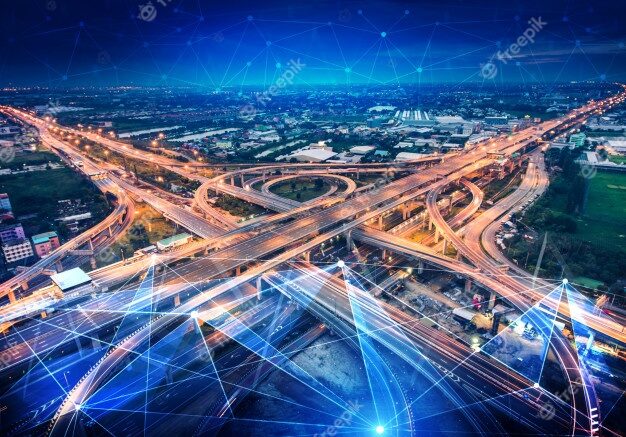To say that modern technology is revolutionizing the world as you knew it would be the understatement of the century. Not only is technology changing the world for the better, but it’s also catapulting society so far into the future that you can only hypothesize how it will play out. That’s what makes it so exciting.
Humanity’s progress has come so far in terms of infrastructure. Of course, the traditional construction methods that have existed for eons still matter today, but they’re further strengthened and improved upon by modern technology. This is where the idea of smart roads enters the picture.
Gone are the days when the mere development of dirt roads to paved concrete or asphalt sparked joy in society. The discovery of bitumen coating to make roads more durable and sustainable was even considered ahead of its time. But with the continuous innovations in the tech industry, people are beginning to expect more from their lawmakers.
So, if you want to imagine a world built with smart roads and powered by various technologies, here are four burgeoning infrastructure projects that will take you as close to the future as possible:
Smart Pavement
Slippery highways and sharp corners easily account for most of the accidents that occur on the roads. And because first responders aren’t automatically alerted every time an accident happens, there’s a big chance that the victims from the accidents will suffer irreparable damage, or worse, die because of it.
That’s what smart pavements are hoping to solve. These are sensor-studded pavements that will be connected to the internet, which means motorists and commuters will be alerted of any traffic jams on the street. Plus, the smart pavement can also automatically notify emergency services should any accidents occur.
Interactive Lights
Roads need ample lighting for them to be considered safe for motorists to pass through. Usually, there should be at least one lamp post every 250 feet so that motorists can avoid being involved in an accident because it’s too dark to drive. However, these could be deemed a waste of energy.
Interactive lights will use motion sensors to conserve energy and ensure safety on the road. This means that when a car approaches, the lights will sense the proximity and glow brighter. Then, once the car passes, the light will slowly dimmer again. This technology can be perfect for roads that don’t experience heavy traffic and congestion.
Electric Charging Lanes
Since the invention of electric cars, there has been a growing demand for more charging stations alongside existing gas stations. This is because it’s difficult to find places to charge the car, especially on long drives and unfamiliar roads. The electric charging lanes can solve this developing problem.
By embedding magnetic or induction fields on the road itself, electric cars can charge themselves without the motorists stopping and plugging their car into its respective outlet. This means that motorists with electric cars can charge their vehicles by simply driving on the electric charging lane.
Solar Roadways
If only there was a way to generate renewable energy from all the roads in the world, no one would have to struggle with getting electricity for their homes and buildings. This is the problem that Solar Roadways are hoping to solve – it aims to generate power every time a car passes on the roadway.
But to make this possible, one would have to replace the asphalt pavements with glass roads to install solar panels. The roads will also have LEDs and microprocessors. Additionally, because glass can be engineered to fit the criteria of road density, its strength can be further improved to withstand the weight of passing vehicles.
Bonus: Interconnected Tunnels
Although not considered technology, Elon Musk’s underground tunnel project could be the solution to the never-ending traffic problem. This tunnel project began in 2017; it aimed to eradicate the Los Angeles traffic problem by creating an interconnected system of underground passageways around the city.
The project is still very far from completion, but it poses a possibility of cutting a 45-minute drive in ongoing traffic down to five minutes in total. Of course, this is all just hypothetical, but you could only imagine how revolutionary this solution could be in the future if it can solve the traffic problem.
With the developments in the tech industry today, it’s safe to say that you won’t know what to expect in the future until it’s right there in front of you. The greatest minds in the world are working non-stop to re-imagine a world without traffic congestion or very little to no roadside accidents, so all you need to do is buckle up and enjoy the ride.

Be the first to comment on "Four Innovative Technologies That Will Make Smart Roads Possible"